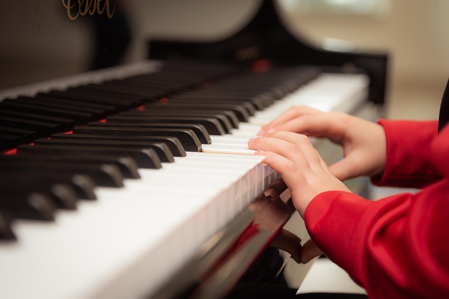How to Set up a Piano Learning Plan
 Are you a music teacher wondering how to set up piano lessons? Of course, it's not just a matter of sitting your student down at the piano and waiting to see what happens. Piano lessons have to be carefully planned as a programme.
Are you a music teacher wondering how to set up piano lessons? Of course, it's not just a matter of sitting your student down at the piano and waiting to see what happens. Piano lessons have to be carefully planned as a programme.
What Are You Trying to Achieve?
There are plenty of published piano learning plans available, but that doesn't mean that any one of them will be right for your purposes. The ideal approach will depend largely on a combination of your preferred teaching style and your student's preferred learning style. If you're anticipating all your students being similar (e.g. young children who are complete beginners) it's easy enough to make a single plan that can be tweaked for each individual. If you're going to have various kinds of students, however, you're going to need a number of different plans.
Who Is Your Student?
Piano students can be a wide range of ages and levels of ability, and they can vary in preferences. Are they hoping to pursue the instrument seriously, or do they just want to be good enough to bash out a few tunes? And what kind of music do they want to play?
If you're going to be teaching a young child, for instance, much of the emphasis is going to be on improving their manual dexterity and basic understanding of tone and rhythm, while theoretical learning is best done through games. Unless you're lucky enough to have a young Mozart as your student, the purpose is to increase confidence and enthusiasm, rather than achieving a high level of performance. A teenager or newly retired adult, on the other hand, will probably be following an existing interest. Exercises and theoretical learning can be more advanced, while practice pieces can be chosen to suit their musical tastes.
In Person or Online?
Before this year, the issue of teaching the piano online would hardly have seemed relevant, but it may well be the most obvious option at the moment. It isn't easy to deliver piano lessons remotely, and it may not be suitable for young children. However, it can be done. As for any online lesson, a strong WiFi connection and a good camera are essential, while of course a music lesson will require higher-quality sound than most online sessions. It's also vital to ensure your piano and camera are positioned to give the best possible view of the keyboard and to help your student achieve a similar set-up. If you're working with a student who's going to be reading music, find a program that allows you to write in musical notation.
Putting It All Together
Once you've determined the various things you're trying to achieve, make a list of what you require. Then go through three or four of the most highly recommended plans, picking out elements that answer these needs. From this, you'll be able to construct a course of lessons that will be suitable for your student's age, ability and aspirations, as well as how you like to teach. For many more tools on how to set up a piano learning plan, sign up with us now.


